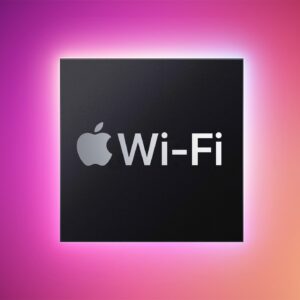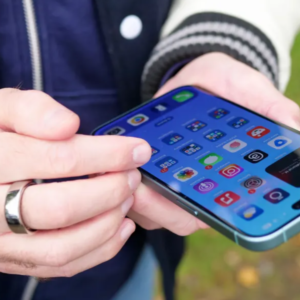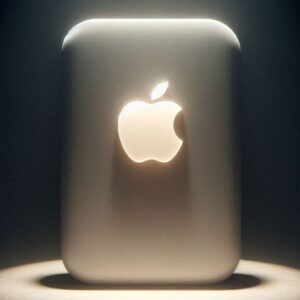The Benefits of an In-House Apple’s Wi-Fi Chip
Apple’s reported plans to debut a custom-designed Apple’s Wi-Fi Chip on the iPhone 17 model in 2025. The introduction of this in-house Wi-Fi 7 chip signifies a transformative step for Apple’s connectivity and performance, especially as the company has relied on third-party suppliers, mainly Broadcom, for iPhone wireless components until now. This shift is not just a technical upgrade; it’s a strategic move that aligns with Apple’s broader aim of managing more of its technology stack, enhancing control over performance, integration, and innovation. Here’s a closer look at how this custom Wi-Fi chip might change the user experience, from faster speeds to better integration across Apple’s ecosystem, and what it signifies for Apple’s technology and business strategy.
Apple’s motivation to produce its own Apple’s Wi-Fi Chip parallels its strategy with the M-series processors in its Macs, which replaced Intel chips beginning in 2020. This shift allowed Apple to customize chips specifically for macOS, resulting in significant gains in performance and efficiency. The same approach is likely behind Apple’s Wi-Fi chip ambitions. By taking control of wireless chip design, Apple can create chips that are optimized specifically for iOS devices, potentially leading to more efficient power consumption, quicker response times, and fewer connectivity issues compared to current third-party solutions.
Wi-Fi 7, the standard Apple reportedly plans to introduce with the iPhone 17, is a leap forward from Wi-Fi 6. Expected to offer speeds up to 40 Gbps (more than four times the top speed of Wi-Fi 6), Wi-Fi 7 also provides reduced latency and increased device capacity. This will be especially useful as homes become more crowded with connected devices, enabling smoother streaming, quicker downloads, and enhanced performance in gaming and other high-bandwidth activities. Users could also experience faster, more stable connections in high-density environments, such as airports or sports stadiums.
Enhanced Integration with Apple’s Ecosystem

A custom-designed Apple’s Wi-Fi Chip will likely enhance the synergy between Apple devices, benefiting users who own multiple products across the Apple ecosystem. For instance, features such as AirDrop, Continuity, and Handoff could become faster and more reliable. If the chip is tailored for iOS, macOS, and watchOS, it could allow Apple to design new features across its devices that would be difficult to achieve using off-the-shelf Wi-Fi chips. Integration with other Apple innovations, such as Apple’s U1 chip for ultra-wideband (used for precise device location), could further improve wireless communications across devices.
Apple’s in-house chip could also bring advancements to specific features, such as FaceTime and iCloud syncing, providing a faster and more seamless experience. Apple has a track record of harnessing custom silicon to push the envelope on its hardware’s performance, and a Apple’s Wi-Fi Chip could similarly enable new functionalities and user experiences by leveraging low-level optimizations across hardware and software.
Reduced Dependency on Third-Party Suppliers

Apple has been working to reduce its dependency on external suppliers, aiming to control more of its supply chain and the overall user experience. In moving away from Broadcom, which currently supplies Wi-Fi and Bluetooth chips for iPhones, Apple takes another step towards supply chain independence. This move also grants Apple greater leverage in product development timelines and cost control, as it would no longer need to coordinate with third-party timelines for component availability. Given recent reports that Apple’s plans to develop an in-house 5G modem have hit technical challenges, the Apple’s Wi-Fi Chip could also allow Apple to progress toward its goal of a fully in-house connectivity solution at a more gradual pace.
By designing and manufacturing its own Apple’s Wi-Fi Chip, Apple can avoid potential supply disruptions that might arise from relying on a single supplier. Broadcom, for instance, is a major player in the wireless chip market, and Apple’s choice to shift to in-house components could insulate the company from any unexpected issues on Broadcom’s end. This shift in supply dynamics is also beneficial for Apple as it would streamline logistics and reduce the cost of manufacturing, helping the company retain more profit on its hardware products over time.
Implications for Wi-Fi 7 and Future Apple Devices

With the anticipated rollout of Wi-Fi 7 in the iPhone 17, Apple’s customers can look forward to next-gen wireless capabilities that will bring a notable bump in performance. Wi-Fi 7’s major upgrades—faster speeds, reduced latency, and improved support for more devices on the same network—align well with user demand for a better experience across bandwidth-heavy tasks. In applications such as augmented reality (AR), virtual reality (VR), and the emerging possibilities in artificial intelligence (AI), lower latency and faster speeds will make these experiences smoother, even on wireless networks.
Moreover, Wi-Fi 7’s Multi-Link Operation (MLO) could enable an Apple-designed chip to maintain multiple simultaneous connections, significantly enhancing stability and efficiency. For example, if one network band becomes congested, the iPhone could seamlessly switch to another, offering a seamless user experience even in environments with heavy traffic.
If Apple successfully implements this technology, it could lead to widespread industry adoption of Wi-Fi 7 as more users come to expect faster and more robust Wi-Fi. In the longer term, as Apple integrates its Wi-Fi chip across other devices, it might provide a consistent experience in wireless connectivity across all Apple devices, including iPads and MacBooks, which are likely to adopt this chip following its debut on the iPhone.
A Step Forward in Apple’s Technology Strategy

Apple’s decision to develop its own Wi-Fi chip underscores the company’s commitment to creating a more cohesive and controlled ecosystem. It follows similar moves in other areas, like the M-series chips and, previously, the T2 security chips. This approach aligns with Apple’s philosophy of designing hardware and software together, ensuring that every aspect of device performance is optimized. Furthermore, the move suggests that Apple is preparing for future advancements in wireless technology that will demand more control over hardware, such as those necessary for the Internet of Things (IoT), VR/AR, and possibly the automotive sector.
This shift also holds potential economic benefits for Apple by reducing reliance on costly third-party suppliers like Broadcom. Should the Wi-Fi chip prove successful, it could further solidify Apple’s standing in the technology market as a leader in both innovation and operational independence. Ultimately, a custom-designed Wi-Fi chip on the iPhone 17 could deliver tangible benefits to users while reinforcing Apple’s autonomy and strategic vision for an integrated hardware ecosystem. As iPhones continue to evolve, Apple’s in-house Wi-Fi chip could be a defining feature, impacting both performance and user experience across the board.
Our Final Thoughts Of New Chip
In summary, Apple’s decision to bring its custom-designed Wi-Fi chip to the iPhone 17 signals a substantial shift towards independence in core hardware components, promising a range of benefits for users and the company alike. By designing its own Wi-Fi chip, Apple can optimize network performance and battery efficiency in ways that are difficult with third-party solutions, leading to faster speeds, reduced latency, and more seamless connectivity across the Apple ecosystem. This shift aligns with Apple’s larger strategy of hardware-software integration, as seen in its M-series chips for Macs, positioning the iPhone 17 as not only a technical upgrade but a strategic milestone for Apple’s future in connectivity.
For Apple’s user base, this move could translate to more reliable connections, smoother streaming, faster downloads, and enhanced support for high-bandwidth activities such as gaming and AR/VR applications. As the iPhone 17 Pro is expected to be the first model to feature this in-house Wi-Fi chip, Apple enthusiasts can expect a next-generation wireless experience that sets new standards in mobile connectivity, further blurring the line between hardware and software in Apple’s tightly knit ecosystem. Stay tuned with us on Facebook & Instagram for more info.
- Foldable iPhone Flip: The Clamshell Concept and What to Expect from Apple
- Pixel 9a Leak Shows Off Google’s Larger, Faster, and More Efficient Mid-Tier Phone
- Powerful New OnePlus 13 Boasts a Powerful 6,000 mAh Battery, Beating Galaxy S25 Ultra
- iPhone SE 4 — Screen Sizes and Design Shine, but One Change Counts

[…] Apple’s Wi-Fi Chip Could Power the iPhone 17 — What Users Need to Know […]